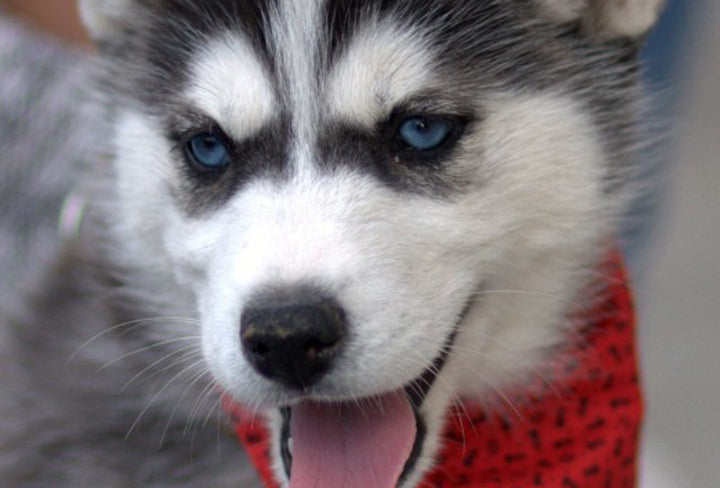The Alaskan Klee Kai, originally called Klee Kai, is a spitz-type breed of dog developed in Wasilla, Alaska, from the early a1970s-1988 by Linda S. Spurlin with the help of her family.
Her idea of creating this type of companion-sized dog came after she observed the result of the accidental mating of an Alaskan Husky (a mixed breed of dog used for sled racing) and an unknown small dog.
The breed was developed with Siberian and Alaskan Huskies using a smaller type of dogs such as Schipperke and American Eskimo Dog.
The reason for this is to reduce the size of the litter without having the condition known as dwarfism. The experiment was kept in private until she introduced the whole concept in 1988 to the public.
Before, the breed was split into Alaskan Klee Kai and Klee Kai for political reasons.
The American Rare Breed Association and the United Kennel Club officially recognized the Alaskan Klee Kai in 1995 and 1997, respectively. The breed’s present name was eventually solidified in the year 2002.
Today, there are roughly about 1500 Alaskan Klee Kai dogs around the world and their numbers are still increasing.
Traits and Behavior
The Alaskan Klee Kai is a very loving dog, especially with their family. They tend to be very curious, intelligent, moderately active and are fast runners. They are extremely loyal to their family members. They also tend to be reserved and cautious of strangers, children or new environments they don’t normally see regularly.

Also, they have strong predator instincts especially if they have never been introduced to smaller animals. Because of this, continual socialization throughout an Alaskan Klee Kai’s life is highly encouraged.
It is also advised that this type of dog shouldn’t be somewhere near very young children as they might react aggressively towards pinching, poking or pulling.
Pet Care and Diseases
Because of the breed’s young age and small gene pool, experts say that the AKK is generally free of genetic issues and some of its diseases or health concerns that are linked to this type of dog, are yet to be discovered.
Despite the limited health information available for this breed, the following problems have been reported:
- Juvenile cataracts
- Liver problem
- Factor VII deficiency
- Pyometra
- Luxation of the patella
- Cryptorchidism
- Cardiac issues
- Thyroid diseases
The Alaskan Klee Kai is an active breed who doesn’t live a sedentary lifestyle, thus requires a good amount of daily exercise. Also, they must live in a house with a large fenced-in yard.

They should be taken on long walks and be provided with a larger outdoor area where they could run and play.
The double-layer coat requires a moderate amount of grooming.
This breed which is an average shedder should be combed and brushed regularly. Alaskan Klee Kai is not a breed that has bad breath or doggy odor. They should only be bathed when it’s needed.
Appearance
The Alaskan Klee Kai is a medium-sized dog breed that appears to be a smaller version of the Alaskan Husky, though with very similar markings or face mask to the Siberian Husky. The most distinguishable differences are the shorter muzzle, larger ears, and higher tail set.
They come in three sizes (Standard, Miniature or Toy):
- Standard: 15-17.5 inches (38-42 cm) and 23 pounds (10 kg)
- Miniature: 13-15 inches (33-39 cm) and 15 pounds (7 kg)
- Toy: below 13 inches (33 cm) and below 10 pounds (4.3 kg)
Furthermore, they have three recognized color variations: black and white, gray and white, or red and white (which may appear as a cinnamon or a dark auburn).
Some dogs have solid white coating but are considered not a standard pure breed by most experts. However, such color variant has just recently become recognized by the United Kennel Club.

Two coat types can be found in this breed, which is both equally accepted. These consist of standard and full-coated varieties.
If the length of the coat is too long, that it covers the physical outline of the dog, it is already considered not an AKK breed.
General Information
The average lifespan of this dog breed is about 10 to 13 years. The Alaskan Klee Kai on average has a litter of 1-3 puppies. Other names for this breed are Klee Kai, AKK, Miniature Alaskan Husky and Mini Husky.
Breed Club
Visit this dog club website dedicated to Alaskan Klee Kai. Click this link: https://www.akkaoa.org/

